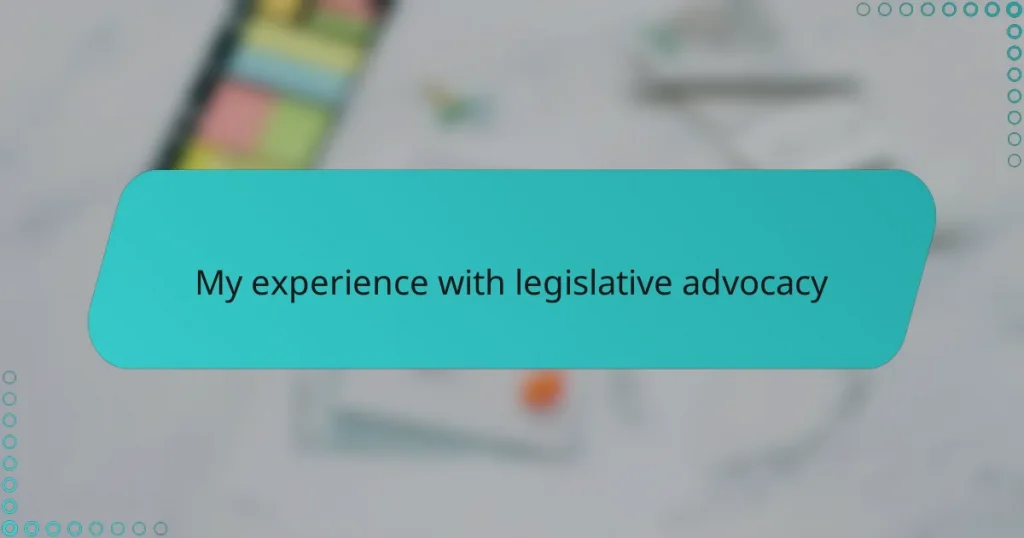Key takeaways
- Legislative advocacy involves clear communication, storytelling, and persistence to influence decisions that affect real lives.
- Building relationships with lawmakers requires genuine interest, consistent communication, and patience to foster trust and collaboration.
- Effective advocacy campaigns rely on clear goals, strategic engagement with various stakeholders, and adaptability to overcome challenges.
- Understanding your audience and simplifying complex issues can significantly enhance the impact of advocacy efforts.
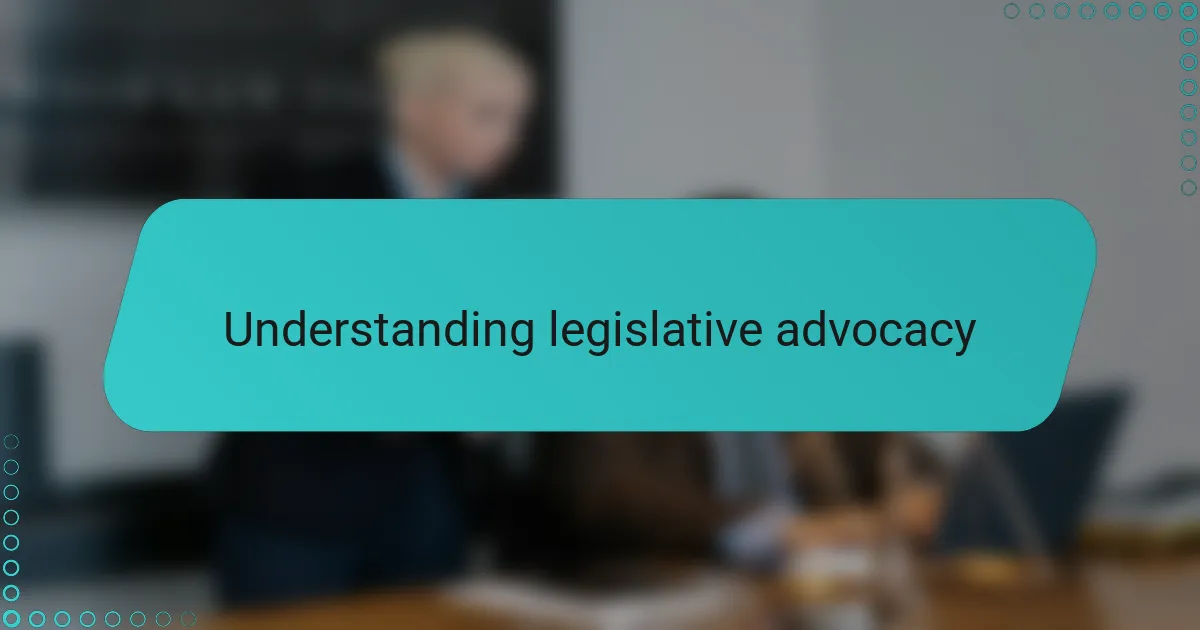
Understanding legislative advocacy
Legislative advocacy, to me, means actively engaging with the laws that shape our society. It’s not just about understanding bills or policies; it’s about knowing how to influence decisions that affect real lives. Have you ever wondered how a single conversation with a lawmaker could lead to a change in legislation? I have, and that thought keeps me motivated.
When I first stepped into this world, I felt overwhelmed by the complex language and endless procedures. But as I immersed myself, I realized advocacy is really about clear communication and persistence. It’s about telling stories that highlight the human impact of laws—something numbers alone can’t capture.
What struck me most was the power of collaboration. Legislative advocacy is rarely a solo effort; it’s about building relationships and finding common ground. I learned that empathy, coupled with factual knowledge, can open doors even in the most challenging political environments. Isn’t that a reassuring thought?
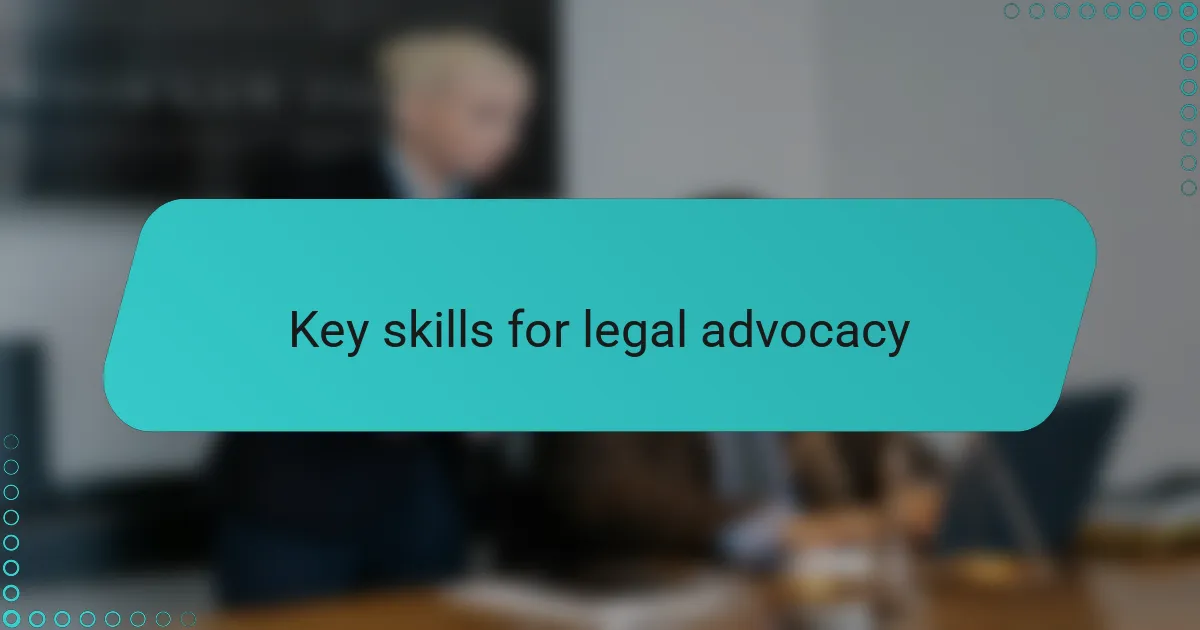
Key skills for legal advocacy
One skill I found absolutely essential is effective communication. Early on, I learned that it’s not enough to just know the law—you have to explain it clearly and compellingly. Have you ever noticed how a well-told story can resonate far more than a stack of legal documents? That knack for storytelling helped me connect with lawmakers in a way facts alone never could.
Another key skill is persistence. There were moments when progress seemed stuck, and I felt like giving up. But what I realized is that advocacy is a marathon, not a sprint. Keeping up consistent pressure, following up on meetings, and patiently navigating setbacks made all the difference. Have you experienced how steady, relentless effort can eventually tip the scales?
Lastly, relationship building emerged as a valuable skill in my journey. Advocacy isn’t just about fighting for a cause; it’s about creating trust and understanding with diverse stakeholders. Through genuine listening and empathy, I found allies where I least expected them. Who would have thought that a casual coffee chat could turn into a powerful partnership? That human connection is what fuels real change.
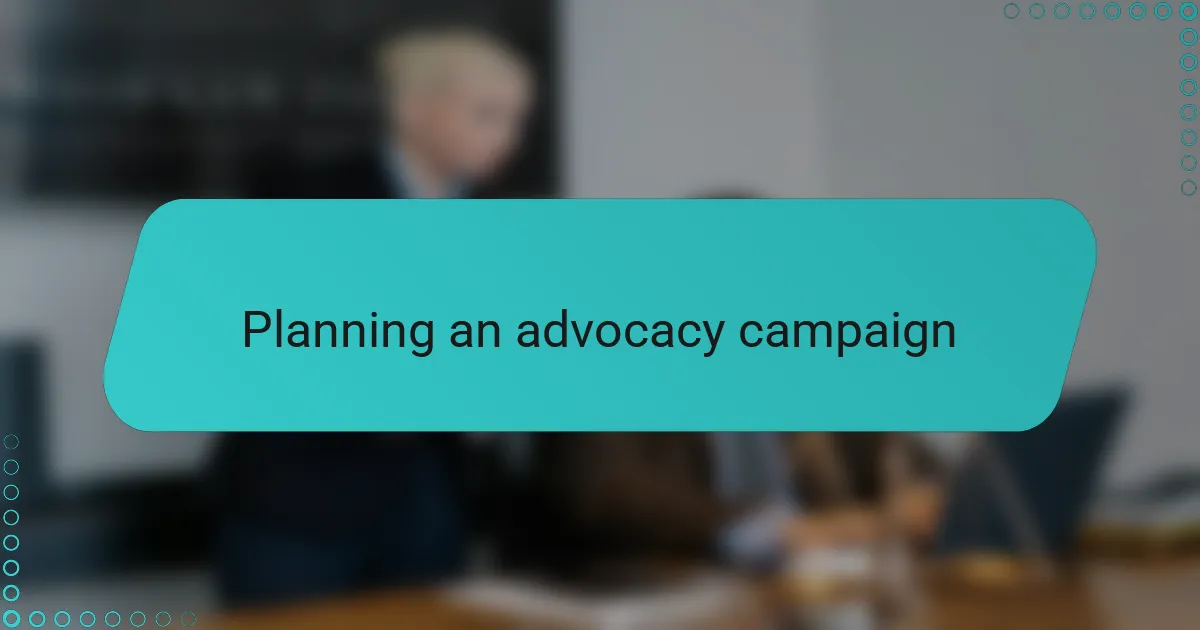
Planning an advocacy campaign
Planning an advocacy campaign felt like assembling a puzzle with pieces scattered all over the table. I quickly understood that clear goals are the backbone of any effective campaign—without knowing exactly what change I wanted, I was setting myself up to wander aimlessly. Have you ever started a project without a roadmap and felt the frustration of going in circles? That was me before I learned to pinpoint objectives and measure progress.
Mapping out who to engage became a strategic game. I had to think beyond just lawmakers and consider community leaders, media outlets, and even potential opponents. I remember one campaign where identifying the right allies opened doors that I never imagined—relationships formed in unexpected places became my greatest assets. Doesn’t it amaze you how sometimes the most unlikely connections can drive a campaign forward?
Finally, creating a timeline was tougher than I expected. Life and politics rarely follow neat schedules, yet having deadlines kept the momentum alive. I found that breaking the campaign into smaller, manageable milestones not only made the work less daunting but also allowed room for flexibility. How do you balance staying on track while adapting to sudden changes? For me, it’s been about embracing both structure and patience in equal measure.
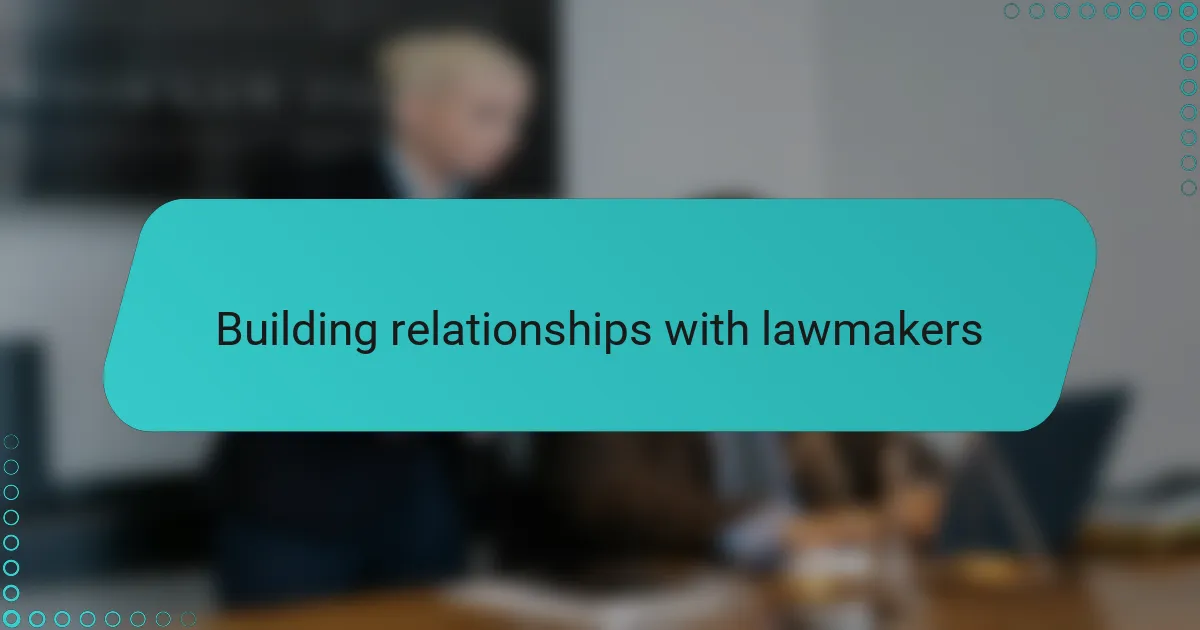
Building relationships with lawmakers
Building relationships with lawmakers wasn’t something that happened overnight for me. I recall my first meeting—nervous, unsure, and hoping to make a good impression. Over time, I learned that showing genuine interest in their perspectives often opened doors far wider than a rehearsed speech ever could.
What surprised me most was how small gestures made a big difference. Sending a follow-up email thanking them for their time or sharing relevant information helped me stay on their radar without being pushy. Have you ever noticed how consistent, thoughtful communication can turn formal contacts into trusted allies?
Of course, trust doesn’t develop without patience. I learned to respect their time and priorities, understanding that building rapport was a gradual process. It made me think: isn’t advocacy as much about listening as it is about speaking? That balance changed the way I approached every interaction, making my efforts feel more collaborative than confrontational.
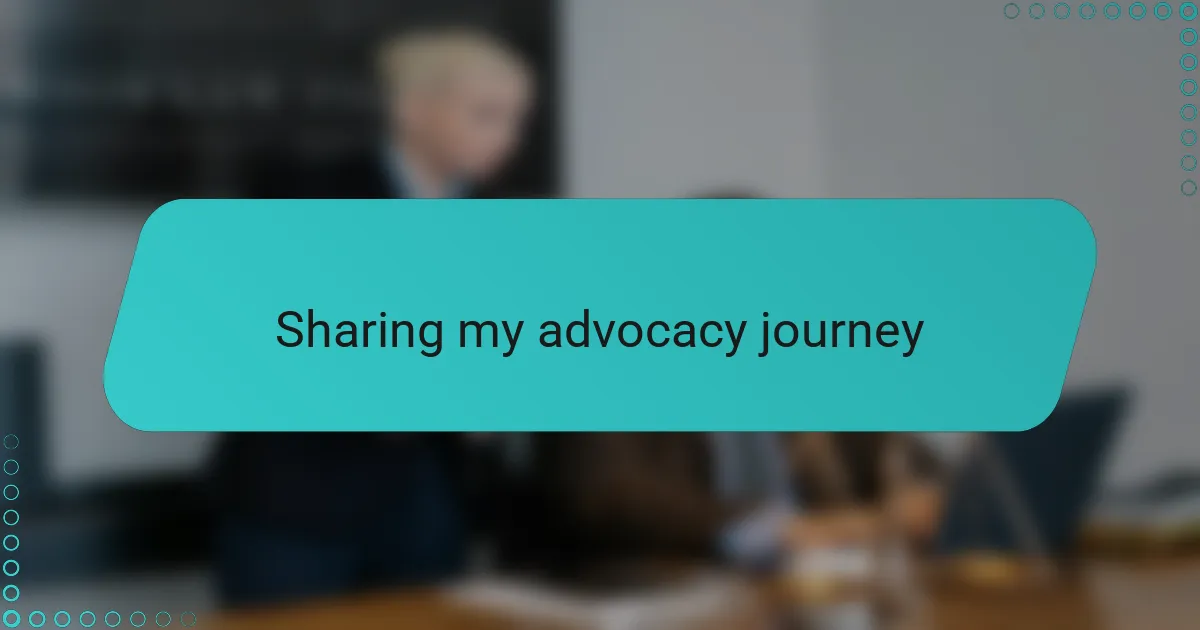
Sharing my advocacy journey
Sharing my advocacy journey feels like recounting a series of small victories and lessons learned along the way. I remember the early days when I doubted if my voice could truly make a difference—have you ever felt that way? But each conversation, each meeting, slowly built my confidence and revealed the real impact one person can have.
There were moments of frustration, too, when progress seemed elusive despite all my efforts. Yet, looking back, I realize those challenges taught me resilience and the importance of staying focused on the larger goal. Do you think persistence is what separates success from failure? In my experience, it certainly plays a huge role.
What I cherish most about this journey is the unexpected connections I made—people who became collaborators, mentors, and friends. Those relationships transformed advocacy from a daunting task into a shared mission. Isn’t it remarkable how human connection can give meaning and momentum to a cause?
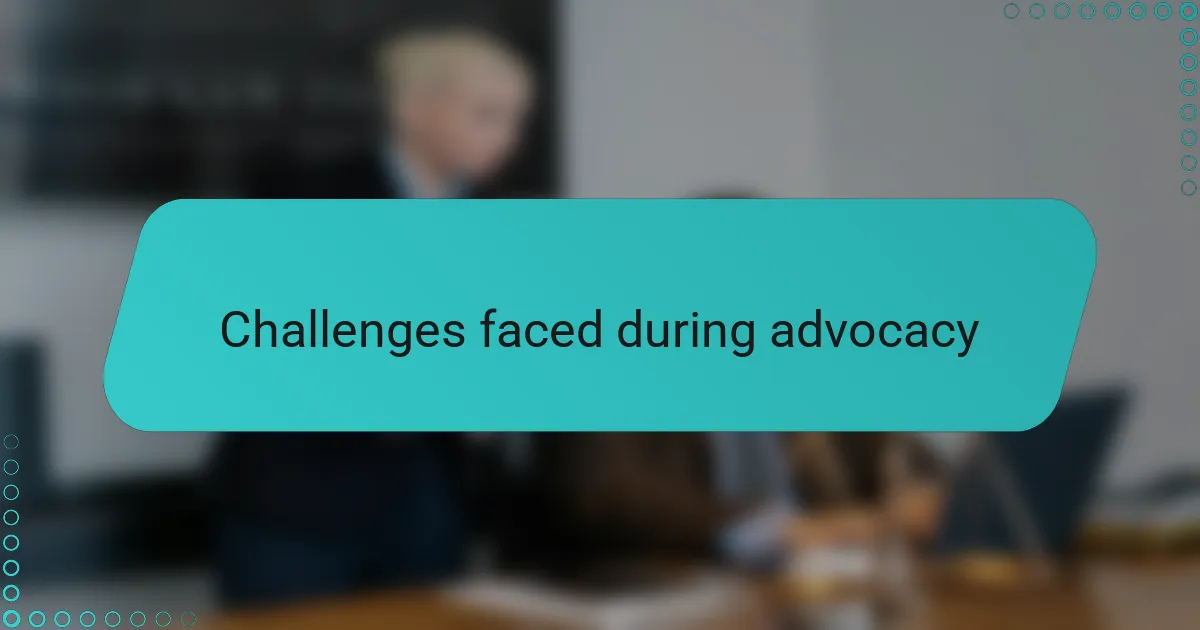
Challenges faced during advocacy
Advocacy often felt like navigating a maze with hidden traps. I remember countless times when complex legislative jargon left me bewildered—have you ever stared at legal text and felt completely lost? That confusion, I realized, wasn’t just a personal hurdle but a barrier many face, making clear, accessible communication all the more vital.
Dealing with differing agendas was another tough challenge. I’ve had moments when passionate debates seemed to hit brick walls because stakeholders prioritized conflicting interests. It made me wonder: how do you find common ground when everyone’s pulling in different directions? For me, patience and empathy became my compass in those situations.
Then there’s the emotional toll advocacy can take. I’ve faced days when setbacks hit hard, and frustration crept in like a shadow. Have you ever felt that wave of discouragement after pouring your heart into a cause that stalls? What kept me going was remembering why I started—the real people behind the policies who depend on change.
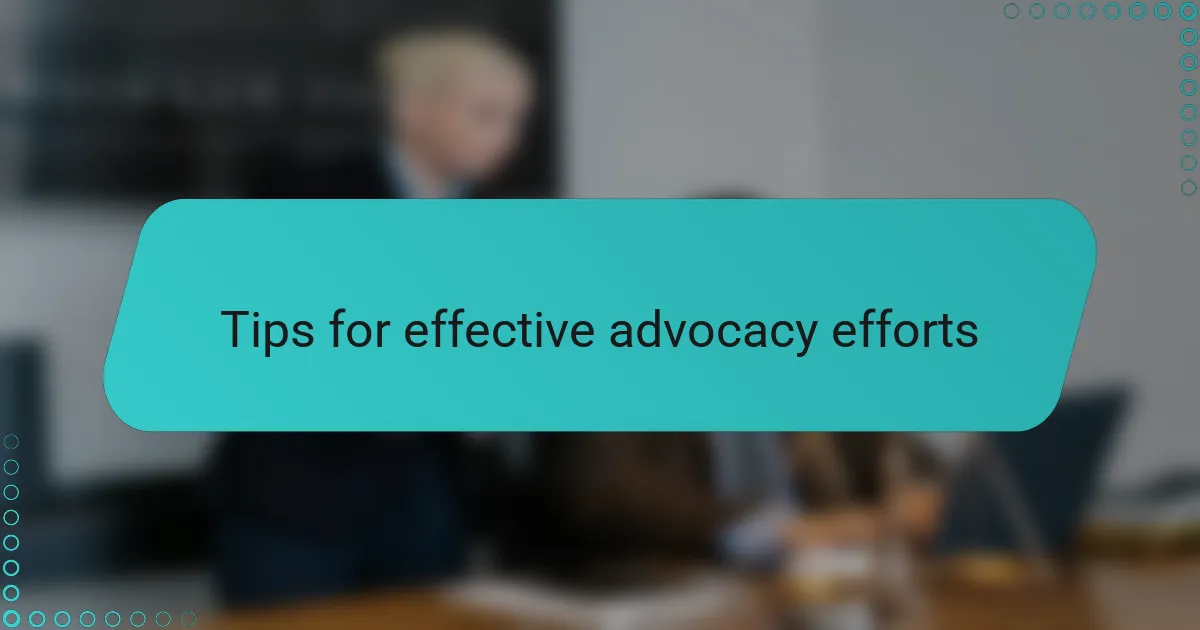
Tips for effective advocacy efforts
One tip I can’t stress enough is the importance of knowing your audience. When I tailored my message specifically to the concerns and values of the lawmakers I met, it made a world of difference. Have you ever noticed how striking a chord with someone’s priorities can turn a casual conversation into a meaningful dialogue? That moment of connection often opened doors that facts alone couldn’t.
Consistency has also been a cornerstone of my advocacy efforts. There were times I followed up repeatedly, sometimes feeling like I was knocking on a closed door. But persistence paid off—lawmakers began to recognize me as a reliable voice rather than a passing comment. Isn’t it intriguing how steady, respectful persistence can gradually build credibility?
Finally, I learned to keep my communication clear and focused. Early on, I made the mistake of overwhelming people with too much information. I found that breaking down complex issues into simple, relatable points not only kept attention but also inspired action. Have you ever tried explaining something complicated and realized that the simpler you make it, the more impact it has? That clarity became my most effective tool.
